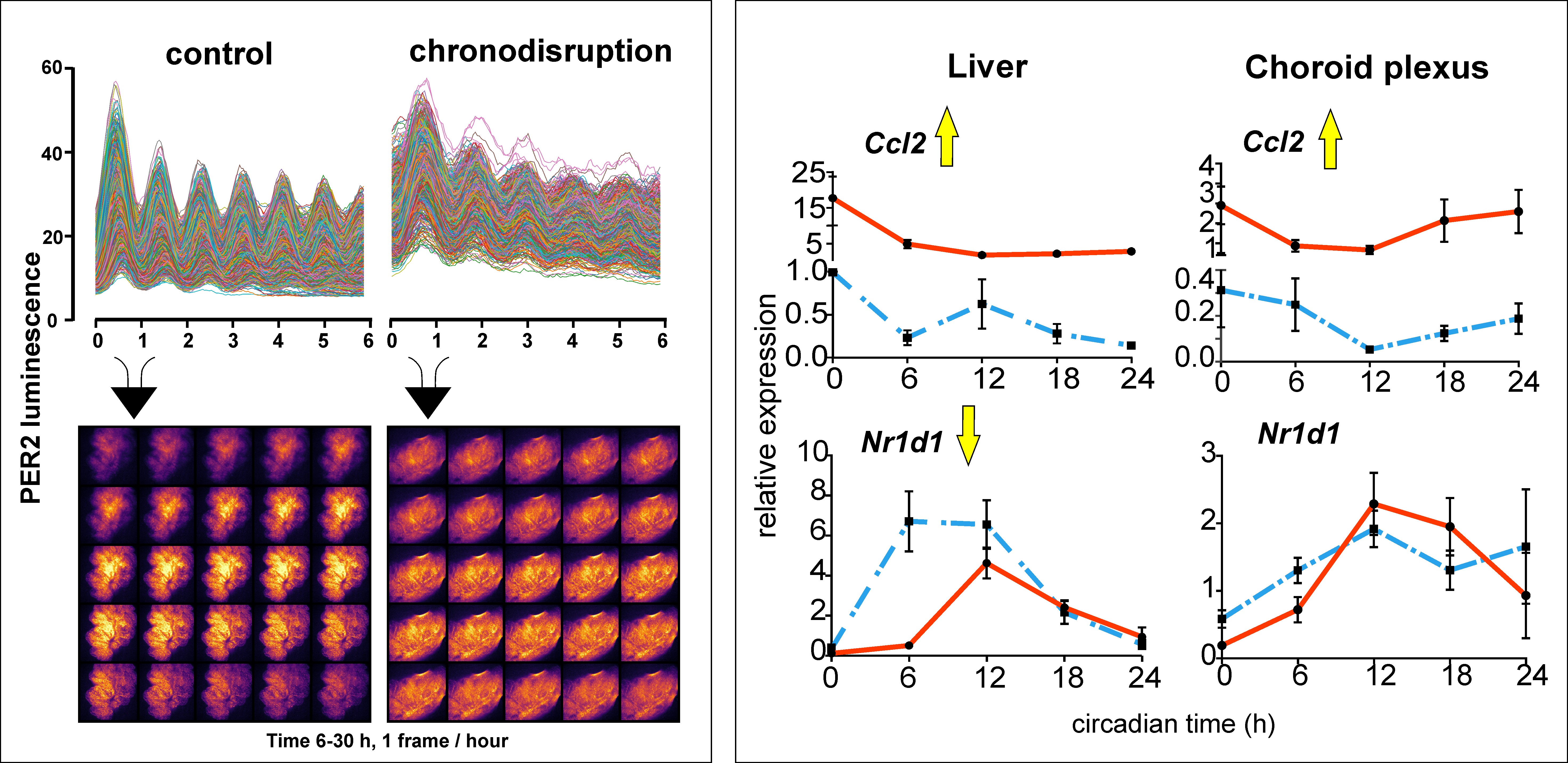Clock in the choroid plexus in the brain are sensitive to disruption of the daily regime but resistant to inflammatory conditions
In the ventricles of the brain there is a structure called the choroid plexus where cerebrospinal fluid is produced. Recent research has shown that its role is much broader. It also acts as a barrier for the transfer of substances between the blood and the brain, is involved in the active transport of important substances to the brain, in protecting the brain from neuroinflammation and in the removal of metabolic products of the brain, including those that cause neurodegenerative diseases such as Alzheimer's disease and others. Previous studies have shown that the choroid plexus has a robust circadian clock that controls many of its functions to vary throughout the day and night. In our study, we monitored the clock in the choroid plexus in real time under ex vivo conditions by recording rhythmic changes in bioluminescence that correspond to changes in levels of one of the proteins (PER2) essential for the molecular operation of the clock. We found that disrupting the daily regime in the mouse by altering the light-dark cycle (chronodisruption) not only disrupts the clock in the suprachiasmatic nuclei that controls the sleep-wake cycle, but also significantly suppresses the rhythm of the clock in the choroid plexus. A surprising finding was that, unlike other clocks in the body, the clock in the choroid plexus was completely resistant to the pro-inflammatory state induced by the chronodisruption or by the application of lipopolysaccharide. The mechanism of this resistance is likely related to the specific response of the choroid plexus to chronodisruption at the level of glucocorticoid signaling. The results show high sensitivity of the clock in the choroid plexus to disruption of the circadian system. In addition, they showed that operation of the clock is preserved even during proinflammatory state. These results form the basis for a new direction of research into the impact of disrupted function of the clock in choroid plexus on brain homeostasis.

Left: Rhythms of bioluminescence recorded over 6 days with an Olympus LV200 bioluminescence microscope in single cells of the choroid plexus of mPer2Luc mice maintained under control conditions and after exposure to chronodisruption. Right: Differential response of the circadian clock in the liver and choroid plexus to injection of lipopolysaccharide (LPS) in mice. While LPS elicited a pro-inflammatory response (Ccl2) in both tissues, it suppressed the amplitude of rhythmic Nr1d1 clock gene expression only in the liver.
Drapšin M, Dočkal T, Houdek P, Sládek M, Semenovykh K, Sumová A: Circadian clock in choroid plexus is resistant to immune challenge but dampens in response to chronodisruption. Brain Behavior and Immunity. Roč. 117, March (2024), s. 255-269. ISSN 0889-1591. E-ISSN 1090-2139, IF = 15.1 DOI
